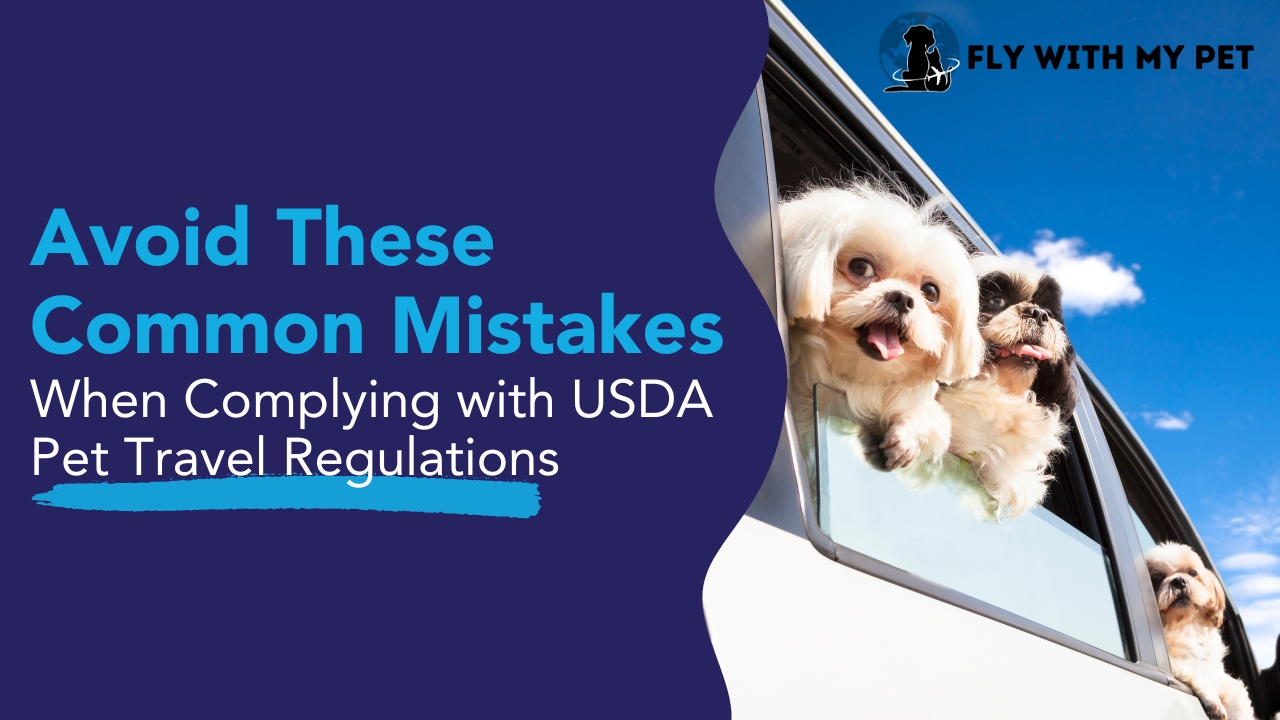
Traveling with pets is not just about packing their favorite toy or ensuring they have a comfortable carrier. When it comes to flying domestically or internationally, the United States Department of Agriculture (USDA) sets specific regulations to ensure the safety and well-being of your furry friends during travel. However, many pet owners, eager for adventure or a change of scenery, overlook critical details in these regulations, leading to stressful and sometimes costly travel experiences. Here, we outline the most common mistakes pet owners make when trying to comply with USDA pet travel requirements and how to avoid them.
1. Not Researching Airline-Specific Pet Policies
While the USDA provides overarching guidelines for pet travel, individual airlines may have their own set of rules that are even stricter. Failing to familiarize yourself with these can lead to last-minute surprises at the airport. Always check with your airline well in advance about their pet travel policies, including carrier size, pet weight limits, and whether pets can travel in the cabin or must be checked as cargo. Our free guide for traveling with pets on major airlines helps you easily sort through this labyrinth of information and narrow down the airline best for your specific needs.
2. Skipping Health Certificates and Vaccination Records
A common mistake is assuming your pet doesn’t need a health certificate or up-to-date vaccination records for travel. The USDA pet travel guidelines often require a health certificate issued by a licensed veterinarian within a certain timeframe before travel. Additionally, most destinations require proof of rabies vaccination. Failing to present these documents can prevent your pet from boarding the flight.
3. Overlooking Destination-Specific Requirements
Each state and country has its own entry requirements for pets, which can include specific vaccinations, quarantine periods, and additional documentation. Not researching these requirements thoroughly can lead to your pet being denied entry, quarantined, or facing hefty fines. Always check the USDA’s website and the embassy or animal import regulations of your destination country for the most up-to-date information.
4. Neglecting to Prepare Your Pet for Their Carrier
Many pets are not used to being in a carrier for extended periods. Failing to acclimate your pet to their carrier before travel can lead to anxiety and stress. Start acclimating your pet to its carrier as early as possible, making it a positive space with treats and familiar bedding. This preparation can make the travel experience much smoother for both you and your pet.
5. Not Considering Your Pet’s Comfort and Safety
Ensuring your pet’s comfort and safety during the flight is crucial. Common oversights include not providing enough water for hydration, not using a well-ventilated carrier, or failing to secure the carrier properly. Consider all aspects of your pet’s well-being during the flight, including their emotional comfort. A favorite toy or blanket can make a big difference.
6. Waiting Until the Last Minute to Make Arrangements
Many pet owners underestimate the time it takes to prepare for pet travel. Waiting until the last minute to book flights, secure health certificates, or get the necessary vaccinations can lead to unnecessary stress and potential travel delays. Start planning your pet’s travel arrangements well in advance to ensure a smooth journey.
Flywithmypet.com provides a free Pet Travel Assistant that is an intelligent, user-friendly platform that will provide you with:
- A list of documents needed to travel
- Health requirements
- Travel timelines
Traveling with pets under USDA regulations requires thorough preparation and attention to detail. By avoiding these common mistakes, you can ensure a safe and enjoyable travel experience for you and your furry companion. Remember, when in doubt, consult with your veterinarian and reach out to your airline and the USDA for guidance. Safe travels!
